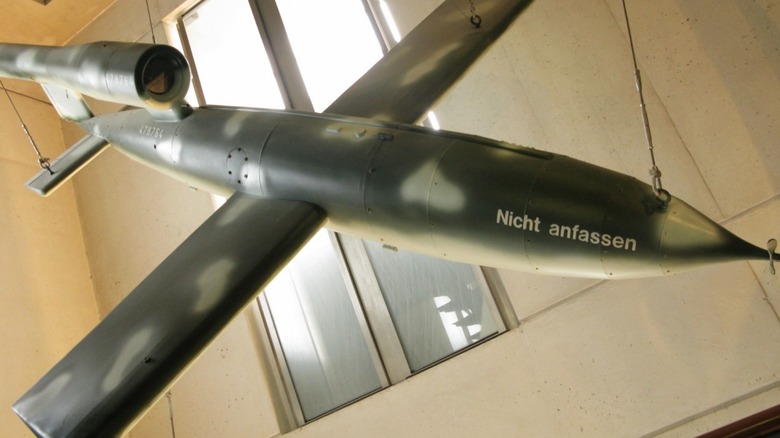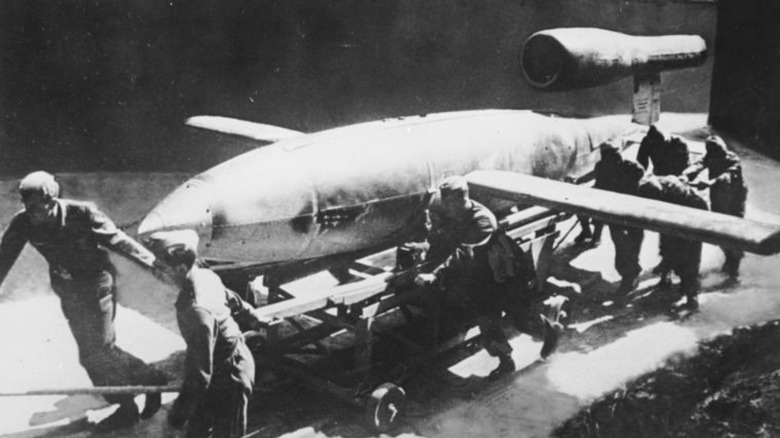What Was The First Cruise Missile And Was It An Effective Weapon?
Cruise missiles get a lot of attention these days, especially with the advent of hypersonic cruise missiles like the ones Russia used in Ukraine. It's not unusual to assume that cruise missiles are a relatively new technology, seeing as they're incredibly advanced and able to strike targets far from their launch sites. Cruise missiles can be fired from stationary silos, surface and subsurface ships, and aircraft; so there are numerous ways to get them into the air and heading toward a target.
Modern cruise missiles are incredibly advanced weapons of war, but they're far removed from the weapon's first generation. The first cruise missile ever invented was the V-1 flying bomb developed by the Nazis for use in the Battle of Britain. Specifically, the Nazis used the V-1 and its subsequent cousin, the V-2 rocket, to rain ordnance down on London in a terror campaign aimed at breaking the spirit of the British people. While the weapons worked well enough, the Nazis failed in achieving their mission.
Despite losing the war, Nazi scientists ushered in a new era of rocketry. Thanks to Operation Paperclip, many of these scientists were brought to the United States to aid in the burgeoning space program. German cruise missiles were rudimentary devices compared to their modern counterparts, but they still managed to cause widespread destruction when they struck their targets. Fortunately, they were a late arrival to the conflict, with the first one being fired in June 1944. V-1s were used en masse; hundreds of them blanketed Southern England almost daily.
The V-1 flying bomb — Hitler's first Vergeltungswaffen
Hitler wasn't a fan of the British people. In retaliation for their defiance, he launched a program to develop Vergeltungswaffen or Vengeance Weapons. The first of these terrifying weapons was the V-1 flying bomb. The Allies called them "Buzz Bombs" due to the horrendous noise these German WWII missiles made. Thousands of them rained down on British soil. Each V-1 was armed with an 1,800-pound high-explosive warhead. They flew relatively low, between 2,000 and 4,000 feet above the ground at around 250 miles per hour. This made them difficult to detect or intercept with air defenses.
They had a range of 150 miles which allowed them to strike many targets in the United Kingdom. V-1s had a pre-programmed internal guidance system that functioned like an autopilot which could regulate the bomb's speed and altitude. Its pitch and yaw were controlled by a pair of gyroscopes and it had a magnetic compass to maintain its heading. In some cases, when a rocket was outfitted with a radio, the launch facility would receive guidance and target data from the V-1 after it crossed the English Channel.
V-1s were not ballistic missiles. Because they were capable of cruising a distance beyond line-of-sight and engaging set target coordinates, they earned the moniker "pilotless airplanes." They weren't entirely effective, however. British defenses kept the population as safe as possible, an effort which was aided by the fact the V-1 wasn't all that accurate. Still, more than 20,000 were launched between June '44 and March '45, resulting in over 6,000 deaths and 18,000 non-fatal casualties, mostly of civilian personnel.

